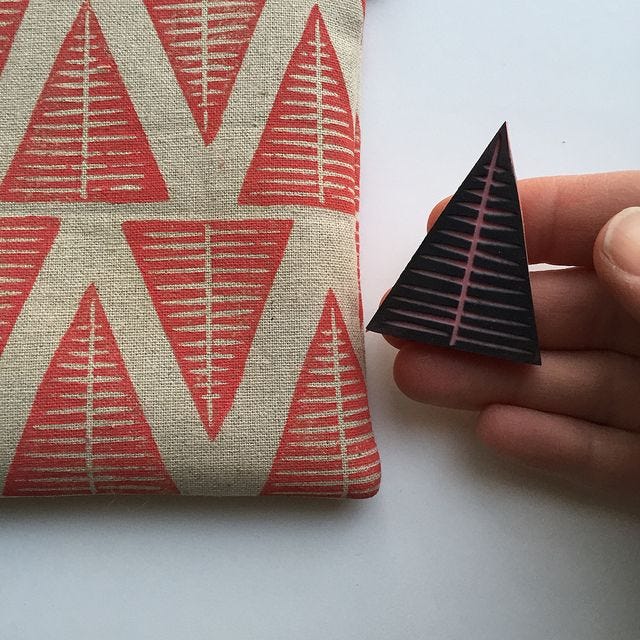Relief Printing Process.
The relief printing process is a traditional and versatile printmaking technique that has been used by artists for centuries. This technique involves many steps like carving an image or design into a block or surface, inking the raised areas, and then transferring the image onto paper or another surface.
The relief printing process has evolved over time, with various cultures and artists contributing to its rich history.

Materials
Relief Printmaking artists typically use materials like wood, linoleum, or rubber for relief printing blocks. Woodcut is one of the earliest forms of relief printing, which involves carving into a wooden surface. Linocut, a more modern variation, the techniques require linoleum sheets that are easier to carve than wood.
Design Creation
Artists create their designs with the understanding that the raised portions of the block will receive ink and transfer onto the other printing surface. This requires careful planning and skilful execution, especially for intricate designs.
Carving Process
The artist uses relief carving tools to remove the unwanted areas of the block, leaving the design in relief. Different tools create different textures and line qualities, allowing for a wide range of artistic and creative expressions.
Inking the Block
Ink is applied to the surface of the relief block using a brayer or roller. The ink sticks to the raised areas while the carved areas remain ink-free.
Printing
Once the block is inked, paper is carefully laid over it, and pressure is applied evenly to transfer the ink from the raised surface to the paper. This can be done by hand, using a press, or other printing methods, depending on the artist’s preference and available resources.
Relief Printing Techniques
Relief printing techniques have several methods, each with its unique characteristics and applications.
Woodcut
Artists carve the design into a block of wood, leaving the raised areas to receive ink. Woodcut is one of the oldest relief printing techniques, with a long history in Asia and Europe.
Linocut
Linocut is a more modern alternative to woodcut, using linoleum sheets for carving. Linoleum is softer and easier to carve than wood, allowing for greater flexibility in design.
Wood Engraving
In wood engraving, artists use dense hardwood, such as boxwood, and engrave the design into the end grain of the wood. The fine lines and intricate details possible with this technique make it a favourite for detailed illustrations.
Foam Block Printing
Foam block printing is a simple and beginner-friendly relief printing technique. Artists carve or incise the design into foam sheets, which are then inked and printed. This technique is often used in educational settings or for quick and experimental prints.
Multiple Block Printing
The process involves using multiple blocks, each carved with a different color, to create a multicoloured print. The artist must align the blocks accurately to achieve the desired final image. This technique is common in both traditional and contemporary relief printing.
Reduction Printing
Reduction printing involves using a single block for multiple colors. The artist carves away areas after each color is printed, reducing the block until the final image is complete. It requires careful planning and precision to achieve the desired print.
Relief printing Artists can produce multiple prints from a single block, making relief printing an efficient and reproducible method. This aspect has been historically significant, especially in the production of illustrations, bookplates, and posters.
